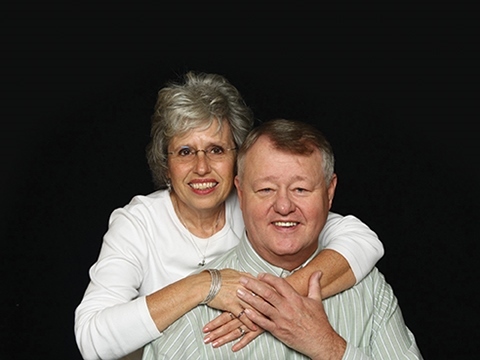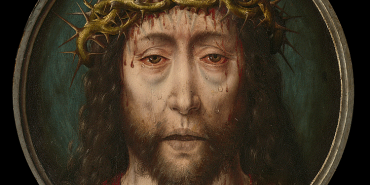God's Social Network of Grace

Some sermons bomb. Others ignite. I've had my share of sermons that bombed.
But this day in Kiev, Ukraine, was different. The meeting hall, located in an office space, is the central church of our Nazarene work on this relatively new field. It was my first time here, and Pastor Vova (Volodynmyr Masyuk), a thin, angular man, serves as both pastor and district superintendent.
He was my translator and student for a course I taught in Moscow in 1998. We had eaten out together in Kansas City in 2004 when he shared with me the hopes for democracy and justice in his country. He opened up to me about the fears and issues that haunted his wife and made ministry difficult. By 2008, the revolution had aborted, and his wife had died tragically.
What joy it was to meet up with him again, on his turf, with his new bride, Silvia Cortez, a Mexican-American who had taken many trips to Eastern Europe as supervisor for Point Loma Nazarene University traveling students.
This morning, again, he was my translator and host. The congregation of about 40 worshipers had its sprinkling of children, women, the elderly, and a missionary and his family.
I preached on Zacchaeus, the eminent example of a life fouled up by money, politics, and disappointment. His name meant "pure;" he was anything but! He even climbed the sycamore tree, a no-no because it was unclean — its leaves were given to the pigs.
Yet Christ invaded Zacchaeus' intimate world, resulting in a transformation so powerful that the Catholic Church has made the Sunday after Easter Zacchaeus' Day, the epitome of Resurrection power.
Saint Clement of Alexandria even suggested that Zacchaeus had the middle name of Matthias and was the appointed disciple replacement for Judas.
Sometimes closing illustrations are like dessert. But I had heard a story that week that was too meaty for a delicacy. I shared it.
A 17-year old American girl in the U.S. became pregnant. Shamed and embarrassed, her parents helped send her away quietly for the baby's birth and adoption. Following the newborn daughter's birth, thoughts of the child slipped into conscious oblivion.
At 19, the girl married her high school sweetheart, Curt, the biological father of the baby girl given up for adoption. During the next three years, two sons were born to the couple. Due to Curt's unfaithfulness, the marriage was failing. In her desperation, Jan slipped into a Wesleyan Church and was introduced to the reality of Christ, but was not ready to commit her life to Him.
The husband's unfaithfulness didn't stop. Jan took her two sons and moved in with her parents. Then one day she received the call that Curt wanted to reunite with her. Together, they accepted a job transfer, moved to Kansas City, and tried to salvage their marriage.
Meanwhile, a young couple in Kansas City, Mike and Linda Couch, both school teachers, attended the Shawnee, Kansas, Church of the Nazarene and were visited by the pastor, Mel and Jeannie McCullough, who shared about Christ in a distinct way. While the claims of the gospel were being explained, Linda didn't wait to hear the rest of the story. She wanted Jesus that instant. In that moment, their lives were changed, and soon they found themselves studying for the ministry at Nazarene Theological Seminary (NTS) in Kansas City.
At NTS, Mike was confronted by the requirements of an evangelism class conducted by Chic Shaver, a professor, to do house-to-house evangelism. They went to the house of the troubled couple, shared their witness, and invited the couple to the Shawnee Church of the Nazarene.
Amazingly, in their first service, the couple made their way to the altar, confronted self and God, and were converted. The home with the two boys was transformed so that Christ and church now took center stage. A miracle indeed!
Then came that fateful day when a young woman called, searching for her biological mother. She had been raised in a Christian home and was delighted to learn that her biological mother and father had married and that they, too, were Christians. The boys, now young men, discovered for the first time that they had a sister. In those moments, reconciliation happened and a family was reconstituted.
Both young men became ministers. One subsequently felt a call to serve abroad as a missionary. Indeed, he is now in his assignment, serving God in productive and creative ways.
I concluded my illustration:
But friends, I have failed to give you one important detail. You see, that missionary I've been telling you about, the son serving "in productive and creative ways," is sitting in your congregation today, your beloved Scott Rainey, right over there. And the woman sitting beside him is the mother, Jan, visiting her family. Once she was a 17-year-old pregnant teen, desperately trying to wipe her guilt away by surrendering her daughter.
A collective gulp of surprise was heard before the congregation broke into applause. Jan Rainey stood to her feet and shared:
"What the preacher has said is entirely the truth. My life was desperate and only the grace and love of Christ could reach down and bring the healing and wholeness for which I longed. My husband, Curt, became a Christian completely supporting our marriage, our family, and missions around the world. I greet you this morning in the name of Jesus Christ and tell you that what he has done to restore our lives, he can do for you!"
At the end of the service, we sensed a holy hush.
I thought about the divine web of connections — seeds planted in a Wesleyan Church, an alternative adoptive Christian family, the McCulloughs, the Couches, an NTS professor, a faithful Nazarene congregation in Kansas, a Ukrainian pastor whose own life has known brokenness and now healing, and a worldwide Church of the Nazarene that brings people into the full circle of Jesus' love — all in an unforgettable corner of the world where God, that morning, was made manifest.
Fletcher L. Tink directs the Bresee Institute where he teaches urban and compassionate ministries at Nazarene Theological Seminary, and Asia Pacific Nazarene Theological Seminary.
Holiness Today, 2013
Please note: This article was originally published in 2013. All facts, figures, and titles were accurate to the best of our knowledge at that time but may have since changed.




